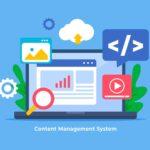For more than two decades, the Internet of Things (IoT) has been a part of our lives. In 1999, the word was used to promote the use of radio-frequency identification (RFID) technology. In the years 2008 and 2009, the number of things linked to the internet outnumbered the number of people who used it.
Interconnected gadgets have become commonplace since then. IoT sensors and gadgets are made by Apple, Cisco, General Motors, and other IT companies. Almost every industry has embraced IoT technology: manufacturing, healthcare, logistics, energy, agriculture, smart cities, and so on.
In this post, we’ll go over how IoT works, why remote IoT management is important, and how it may benefit different industries, as well as a step-by-step approach to assuring remote administration of IoT systems.
How does an IoT system work?
To establish ubiquitous object contact through the internet, two components are required:
IoT sensors
Heat, pressure, movement, humidity, and smoke are all detected by sensors (also known as end devices, physical devices, or nodes). As sensors become more widely used in new industries, the market continues to increase, increasing the number of sensors available.
Sensors often communicate data over a wireless link on a regular basis. Sensors must, in general, be as inexpensive as possible, non-volatile, autonomous, suited to a certain function, and long-lasting. Enabling sensors to connect to the internet is neither cost-effective nor practical, given their small size and the requirements listed above. As a result, sensors are frequently used in conjunction with connection.
IoT connectivity devices
A other set of IoT devices acts as gateways or routers, acting as a link between sensors and the internet. IoT connectivity devices can receive data from sensors via Bluetooth or particular 4G and IoT-oriented protocols like LoRaWAN® and Sigfox, which help link nodes to the internet.
Gateway devices receive data from sensors, pack it, preprocess it if necessary, and transfer it to a web server to be processed. As a result of this processing, you can get:
- computing trends and statistics
- Taking specified steps, such as turning on an irrigation system or issuing a warning in the event of an emergency or anomaly
Because a single connection device can communicate with thousands of nodes, manufacturers strive to make these devices adaptable, autonomous, and dependable. A SIM card or an Ethernet or Wi-Fi internet connection may be included in such a gadget.
In addition, a gadget like this has greater computational capability than a sensor and can be controlled remotely via the internet. The cost of these capabilities is influenced by their availability, with a connectivity device typically costing more than a sensor.

Benefits of remote IoT device management for enterprises
Many IoT providers have traditionally required users to be physically close to IoT equipment for setup and maintenance. This is because, like an internet router, an IoT gateway requires a user to be in the coverage area in order to connect to it.
Enterprises, on the other hand, frequently deploy dozens of gateways in a variety of difficult-to-reach and dispersed locations in order to connect with thousands of nodes. All of these gateways, however, require ongoing setup and monitoring.
Let’s look at how remote IoT management might assist businesses using examples from the shipping, agriculture, and manufacturing industries.
Logistics
According to Research and Markets’ IoT in Logistics Market Research Report, the worldwide IoT in supply chain market would grow at a 13.2 percent CAGR from 2020 to 2030. The capacity to control IoT systems remotely will benefit the following supply chain divisions the most:
Warehousing
Sensors can be attached to forklifts, pallets, and other equipment to make it easier to locate them. Organizations can place sensors throughout a facility to track temperature, air quality, humidity, smoke, and other parameters for condition monitoring. One gateway per warehouse is normally required for remote IoT administration.
Transportation
According to a survey by Research and Markets, among all other divisions of the IoT in logistics market, IoT fleet management generated the greatest revenue to the market from 2014 to 2019. This is partly owing to the fact that real-time fleet visibility is now possible. Sensors can be installed in vehicles, containers, and even expensive goods.
Logistics firms employ private or public IoT networks to locate locations. Companies can instal gateways in warehouses between which cars pass when using private networks. Companies generally acquire data via operator platform gateways installed on roadside posts when using public networks.
Agriculture
By 2023, Insider Intelligence projects that about 12 million agricultural sensors will have been installed around the world. According to IBM, the average farm can create 500,000 data points every day, allowing farmers to increase harvests and earnings.
Agribusinesses may have many fields ranging in size from 10 to 100 hectares. To ensure proper irrigation, current weather conditions should be considered, and sensors that monitor soil moisture and temperature can be dug into the ground to make this possible.
Sensors can employ radio frequency bands that are ideal for agricultural needs since they cover broad regions, easily pass through soil, and are energy efficient to communicate data to gateways. The last feature ensures that such a sensor will last for many years. A doorway mounted on a pole is usually sufficient for a field.
Manufacturing
According to Statista, factory automation devices will account for 57 percent of global IoT manufacturing spending in 2020. This is due to the fact that effective field device management lowers equipment maintenance and operational expenses.
One use for remote field device control is in companies that must adhere to tight clean air regulations. To maintain the desired level of air purity, equipment such as filters and turbines must be adjusted.
Sensors measuring air noise and pressure, the presence of microparticles, and other measurements can be put all over the equipment to monitor its effectiveness and predict its failure. A gateway, normally mounted on the ceiling, can then communicate this information to staff in charge of equipment monitoring, assisting in the prevention of costly air pollution repercussions.
To fulfil expanding demand and expand their business, IoT suppliers are rapidly providing the above-mentioned capabilities of remote device administration. This is where cloud platforms come in handy.

How the cloud helps to ensure remote management of IoT networks
Leading cloud providers such as Amazon Web Services, Microsoft Azure, and Google Cloud provide specialised cloud architecture and methods for managing remote IoT networks. These systems are known as IoT management platforms, and they offer the following advantages to users.
Smooth synchronization between software and hardware
Along with data centres, cloud providers offer a variety of services for IoT infrastructure management to their customers. These services aid in ensuring high-quality software-to-physical-device synchronisation. AWS, for example, offers the IoT Device Shadow service.
A so-called “shadow” is assigned to each gateway in a network as part of this service. This shadow is the cloud infrastructure equivalent of a certain device.The shadow synchronises with its gadget on a regular basis and keeps track of all the parameters that need to be adjusted. The gateway provides the gateway’s current settings and information to the shadow, and the shadow sends updates to the gateway.
Automated gateway setup and maintenance
Prior to going to the cloud, there was no method to handle many gateways in an automated manner. However, manually configuring big groups of gateways one by one takes a long time.
Cloud technology allows a company to see all of its gateways and guarantee that diverse business flows are maintained. Combining gateways in networks and tagging gateways to organise them by distinct parameters are examples of these flows (indoor or outdoor, with or without a GPS module, old or new). An organisation can do large-scale configuration in just one click by grouping gateways by different parameters.
If vulnerabilities are discovered, an IoT manufacturer can see all of its gateways and make emergency firmware changes. Customers can then obtain firmware upgrades from a central location.
High fault tolerance
Signal fluctuations may cause gateways to go offline from time to time. When settings are transmitted to a gateway, it will not receive them if the gateway is offline at the time. However, a cloud system that is accessible 24 hours a day, seven days a week can receive and store all data. When the gateway re-enters service, it will be able to synchronise with the cloud to obtain all of the updates it has missed.
To take advantage of the aforementioned benefits, an IoT provider must follow the cloud migration plan we’ll discuss next.

How to enable remote IoT network management
IoT providers like as RAKwireless, Wanesy Management Center, and Gemtek have already succeeded in providing platforms for remote device management to their customers. Customers can also execute automated gateway setup and maintenance with these IoT providers. This is especially useful for large enterprises that handle many large-scale IoT networks in various locations.
Such software solutions are designed for network administrators and do not necessitate the use of IoT infrastructure professionals within a company. These solutions provide ready-to-use IoT infrastructure management tools.
An IoT provider must follow three key measures to ensure proper IoT network management. Let’s take a look at each one separately.
Step 1. Expand your IoT infrastructure
An IoT provider may just have hardware infrastructure as a starting point. The provider might make gateways and have a research and development department that works on firmware, which is software that is loaded on a gateway’s memory chip and transforms it into a smart device. To expand this infrastructure, an IoT provider begins by utilising a cloud provider’s IoT management platform.
Step 2. Ensure synchronization between the cloud and gateways
Although an IoT management platform such as AWS provides capabilities for assuring synchronisation, your gateway firmware must understand its shadow, including how to accept settings from it, report data to it, and accomplish this synchronisation in a reliable and safe manner.
Because most cloud providers don’t provide this feature, you’ll need to modify your gateway firmware and set up cloud services to enable two-way synchronisation. Yalantis, for example, is an independent technology supplier with IoT competence who can build up your IoT management platform.
Enabling synchronisation between a cloud service and gateways allows any external software service to interface with a gateway, such as a gateway onboarding platform. This is provided by the cloud service, which is always available and has well-defined connection restrictions.
Proceed to the following stage once you’ve established quality synchronisation between the cloud, shadows, and your gateways.
Step 3. Enable users to remotely manage their gateways
An IoT provider must give consumers with a useful tool for managing their IoT networks. This tool should assist client network administrators in managing all of the company’s IoT networks. A system like this must be able to:
- have unique features such as multiple maintenance scales, reporting
- capabilities, and troubleshooting tools
- provide audit logs and user rights to ensure security
For RAKwireless, we created a user-facing system like this. The AWS IoT Core message broker connects the SaaS web application to our client’s IoT management ecosystem. New gateways are automatically provisioned to AWS IoT Core and give technical characteristics to assist users in finding, onboarding, and configuring gateways. Users may update gateways remotely and get near-real-time alerts if their equipment fails.
You’re likely to confront a few issues during cloud migration and when developing a user-facing software. Let’s take a look at them and see what we can do to address them.
Issues that you may face while assuring remote IoT management
Enabling your clients to use remote IoT management is a difficult process with many potential risks. They are linked to the following aspects in general.
Ensuring data security
To manage a gateway before shifting to the cloud, you needed to be near to it and know its local password. However, using the cloud exposes your system to cyber-attacks and malware. Consider these techniques in addition to creating stringent user permissions defining which users are allowed to detect and administer specific gateways.
A secure communication channel must be established for a gateway to securely communicate with the cloud. A certificate exchange between a gateway and the cloud is one way to accomplish this. As a result, other hardware is unable to access the cloud provider’s account due to a lack of the appropriate certificate.
Your gateway should be able to auto-provision, register in the cloud, and ask the cloud for service in order to build a secure connection between the cloud and a client-facing app. The end user must then be able to use the user-facing app to onboard their gateway. The user does this by inputting the gateway’s unique serial number into the system.IoT providers utilise a variety of methods to assist users in proving their gateway ownership. They could include adding a field to a gateway interface where a user must input a unique buyer ID or adding an extra key to the gateway serial number.
Enabling asynchronous/synchronous interactions
Because gateway setup in the cloud is partially asynchronous, your web platform should enable both asynchronous and synchronous interactions. When communicating with the cloud, the cloud-facing platform takes data and asks you to wait for the cloud to provide data to the gateway.
However, implementing standby mode inside the platform architecture is frequently impossible (for example, in case of using the serverless approach).
Peculiarities of the web platform architecture
You should think about more than just asynchronous/synchronous interactions when creating a web platform architecture. Because IoT equipment has limited CPU capacity, doing tasks such as applying many adjustments to the hardware device can take a long time. Such lengthy activities may exceed the cloud API gateway’s current timeout.
If you choose a serverless design to save money on your system, keep in mind that it’s difficult to ensure long-running operations, asynchronous operation support, security, and fault tolerance with this architecture. Developers are forced to come up with non-standard architectural solutions in order to meet these issues.
If you choose to work with a technical partner to provide your clients with high-quality remote IoT management services, make sure your partner understands how to avoid the issues we discussed in this piece.






